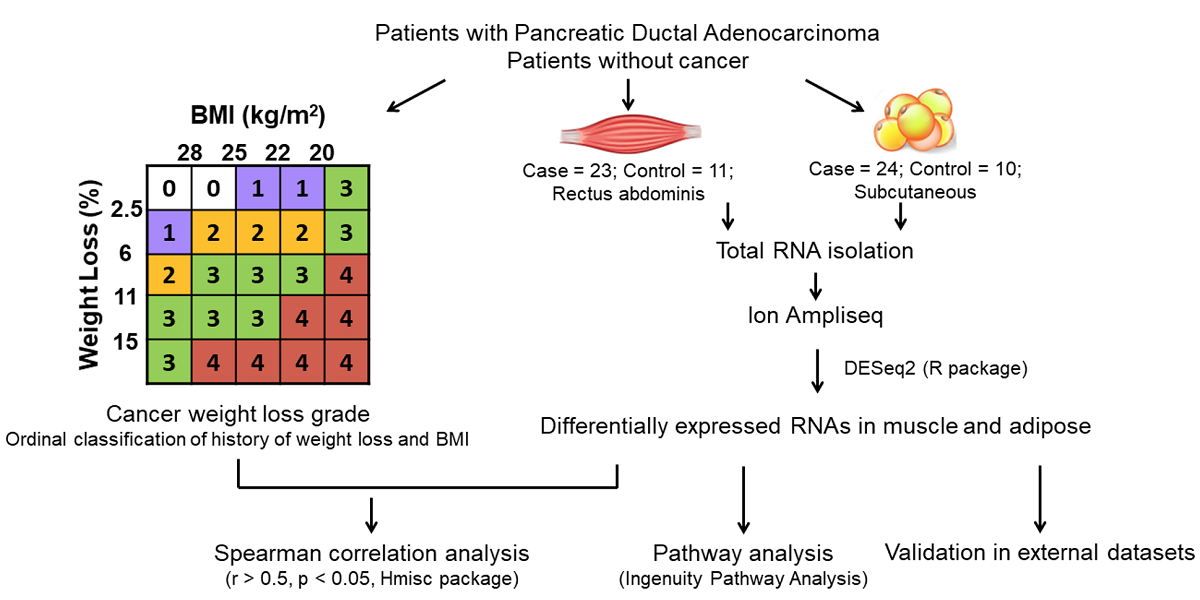Preprint
Article
Profiling of Matched Adipose and Skeletal Muscle in Human Pancreatic Cancer Cachexia Reveals Distinct Gene Profiles with Convergent Pathways
This version is not peer-reviewed.














Submitted:
25 March 2021
Posted:
26 March 2021
You are already at the latest version
A peer-reviewed article of this preprint also exists.
Abstract
The vast majority of patients with pancreatic ductal adenocarcinoma (PDAC) suffer cachexia. Although cachexia results from concurrent loss of adipose and muscle tissue, most studies focus on muscle alone. Emerging data demonstrate the prognostic value of fat loss in cachexia. Here we sought to identify the muscle and adipose gene profiles and pathways regulated in cachexia. Matched rectus abdominis muscle and subcutaneous adipose tissue were obtained at surgery from patients with benign conditions (n=11) and patients with PDAC (n=24). Self-reported weight loss and body composition measurements defined cachexia status. Gene profiling was done using Ion proton sequencing. Results were queried against external datasets for validation. 961 DE genes were identified from muscle and 2000 from adipose tissue, demonstrating greater response of adipose than muscle. In addition to known cachexia genes such as FOXO1, novel genes from muscle, including PPP1R8 and AEN correlated with cancer weight loss. All the adipose correlated genes including SCGN and EDR17 are novel for PDAC cachexia. Pathway analysis demonstrated shared pathways but largely non-overlapping genes in both tissues. Age related muscle loss predominantly had a distinct gene profiles compared to cachexia. This analysis of matched, externally validate gene expression points to novel targets in cachexia.

Keywords:
Subject:
Medicine and Pharmacology - Immunology and Allergysupplementary.xlsx (712.64KB )
Copyright: This open access article is published under a Creative Commons CC BY 4.0 license, which permit the free download, distribution, and reuse, provided that the author and preprint are cited in any reuse.
Alerts
MDPI Initiatives
Important Links
© 2025 MDPI (Basel, Switzerland) unless otherwise stated




